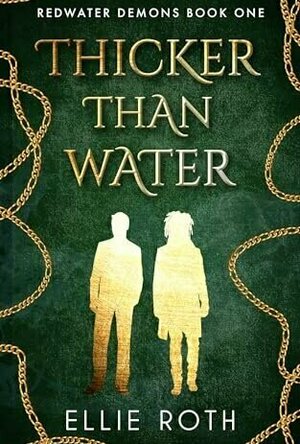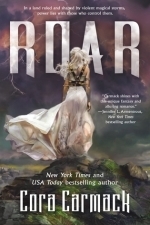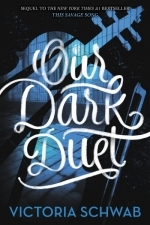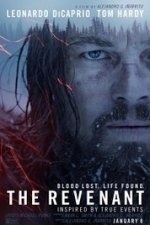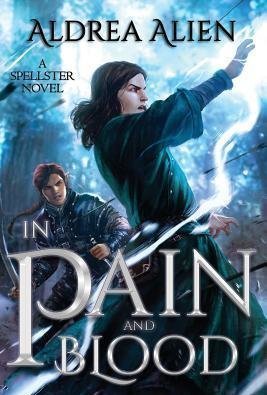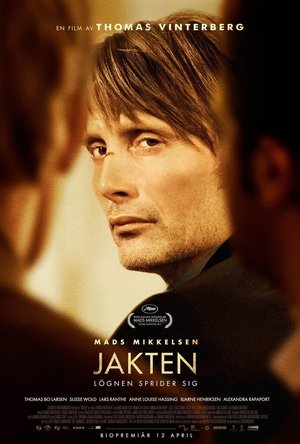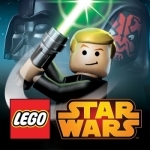
LEGO® Star Wars™: The Complete Saga
Games and Entertainment
App
LEGO® Star Wars™: The Complete Saga is available on iOS for the first time! ***Episode I Story...
Debbiereadsbook (1617 KP) rated Thicker Than Water (Redwater Demons #1) in Books
Jul 27, 2024
This book, right here, is what I love MOST about reviewing. I come across a blurb that I love the sound of, by an author that is new to me, and the book blows me away! I freaking LOVED this book!
Julian is a demon hunter. His latest job finds himself adopted by the demon he was sent to kill. But she's just a little girl, and he cannot. He then finds said toddler kidnapped from him, and a demon contacts him, to share custody! (I'm sorry, but that really did make me chuckle!) But as Cassius and JJ bond over Desi, pieces are being moved on the cheesboard, and it's not very clear who will come out on top.
Like I said, freaking loved this book!
I loved the jump straight in for JJ and Desi. I loved the gentle way we are told about this world and the people and demons in it. The world building is excellent, and I could keep up and follow what was being thrown at me at all times. Cass and JJ have redefined the SLOW BUILD! I love the gradual way the attraction builds between these two. It's slow and subtle, and one of them thinks/says something and its "say what now??" SOme funny moments, too.
It's violent in places. JJ bears the brunt of that but not all is on page. MUCH is implied. I liked that we don't get it all, but we get some clues as to how bad it really was.
While JJ and Cass have a slow build, when we get to the main event?? Totally fade to grey and I freaking LOVED THAT TOO!! I'm big enough to admit, I like my books on the steamy side, and I'm also big enough to admit that not all books nned to be explicit. I loved that this one was not.
Betrayal of the highest order is painful for JJ, but Cass comes to the rescue, in his true form. And I loved that there was no indication that demons in this world had another form! There is some indication who might be next, at the end of this one with a bit of the next book. Actually, it gives you the next TWO books, I hope!
This is a new to me author, at the start of a new series. Two questions I ask myself when I read new authors and starts of series: will I read more by this author?? And will I continue the series. My answers to both questions is a HELL FREAKING YES!!
I can't fault this, I really cannot.
5 full and oh-so shiny stars!
*same worded review will appear elsewhere
There are people in the world, called Stormlings, who are able to use their affinities to battle storms. In this land, those abilities relate to the storms that plague the kingdoms and towns. A Stormling may have an affinity for sky fire and be able to battle lightning - or they may have an affinity for tornados. Many battle storms not only to protect their lands but in the attempt to gain more affinities. If strong enough, a Stormling could take the heart of the storm (which manifests as a rock or gem) and use it to channel their abilities.
Aurora is the future Queen of Pavan, but she has yet to show any hint of the power needed to protect her people. As a result, her mother sets up an arranged marriage with the second born son of a neighboring kingdom. Not all is as it appears and Rora sets out to discover the truth. She soon learns that Stormlings are not the only people with the ability to fight storms and realizes that she must learn from these storm hunters so that she can avoid the path her life is currently on.
Aurora begins the book as a strong female character despite the fact that she is forced into a more meek, agreeable role in order to secure the marriage, so it may not seem that way. Although she has not been able to access the magic her blood should give her, she has not rested on her laurels. Rora occasionally trains with the guards in swordsmanship, reads whatever books she can get her hands on, is quite skilled in a number of languages and can chart her course by the stars. While she is not the typical heroine we might expect to save the day, she does grow over the course of the novel and will continue to do so in the second book.
As the majority of the book does not take place in the palace, we do not see much from the Locke family but I am incredibly intrigued by their familial relationships and the Prince himself. He is a dark, strong and imposing figure who is out to claim the throne - but may be less ruthless than he seems. While we do not such much of him, I expect there will be a lot more character development in the second book and I'm looking forward to that.
Locke, the storm hunter, was probably my favourite main character - although I loved the storm hunter crew as a whole. They had such unique personalities, tales and roles in the group and who wouldn't join a group of storm hunters? That would be amazing. Anyway, Locke started to remind me after a while of that over-protective Fae male personality that we see so often in Sarah J Maas' books (which can become tiresome) but his storm hunting prowess won me over. The author wrote each storm, its feeling and the hunters fighting it so brilliantly that those were definitely my favourite scenes in the novel.
This book seemed to set up the world, the magic system and the main characters well but leave plenty of room for development. We don't even see the character who is likely to be the villain until about 75% of the book is over. I'm intrigued by the villain's story and abilities, and can't wait to see where it goes in the second book.
The world is what drew me in and kept me wanting more, despite the cliches, tropes, and mid-level character development. The romance itself was probably the most off-putting because it was so unbelievable to me. It's not necessarily the chemistry and interactions between the two, but rather the way the author writes the male's point of view. To me, it just didn't sound like a guy was thinking those thoughts. Both of her main male characters became almost immediately obsessed with Aurora, wanted to protect her at any cost, thought about her all of the time, etc. As I mentioned before, that overprotective Fae male mentality. While it may seem sweet that they want to be protective, it borders on being too much (and sometimes crosses the line), which is not a healthy relationship dynamic to romanticize. I don't want to give more specific examples and spoil anything. This is not to say that men cannot be emotional and effusive because they can, but for me, just the way that it was done didn't read authentically. Those were the times I felt most drawn out of the narrative.
This book ends with the type of cliffhanger that most books should end on. You are not utterly destroyed and heartbroken that the author has ended this book with such big questions and yet the next is not due out for another year - you are completely in love with the story and the final scenes just make you excited to continue reading.
For me, the book was a little slow to start but once Rora goes on the journey with the storm hunters I think the book picks up a lot. I've seen a few people put the book down because they couldn't get into it and I would just recommend trying to push through a little longer and see if that changes for you. This is an upper-YA novel that I would recommend to ya/teen readers who enjoy fantasy and character growth in their novels.
Sensitivemuse (246 KP) rated Our Dark Duet in Books
Dec 13, 2017
The plot was off to a pretty slow start in this one. Before I start, I’d have to recommend you read This Savage Song before going to this book. You would need the foundation that was set up in This Savage Song to really benefit and enjoy reading Our Dark Duet.
As mentioned before, the plot was off to a slow start. Kate and August are on both different ends of the spectrum but have changed drastically. They’ve definitely ‘grown up’ so to speak. Kate becomes monster hunter extraordinaire. August leads his own squad in the FTF. Kate’s part of the story was definitely more interesting. Despite trying hard not to warm up to people she manages to have her small group of friends (but of course, shuns them anyway despite one of them trying to reach out to her numerous times). I love this quality in Kate. It makes her so much more realistic and puts her way from the group of those ‘stone cold butt kickers that apparently have no soul’.
That being said about Kate. Oh. Lord. That ending. Kate dying with August nearby got my stomach into knots and twists. I can’t believe it. It was beautifully written though and a suitable ending for her. Kate was pretty much a pariah and a lone wolf. August was one of the few that was able to get to know Kate at a more deeper level. It was only fitting that she meets her end with that one person by her side. Beautifully done.
I didn’t really think the romance scene between Kate and August was necessary. It was a minor filler that didn’t need to be added. I never saw August and Kate that way. They were too different and didn’t have that nice ongoing chemistry together. Fighting partners, yes. Partners in love? No I don’t think so.
So more about characters dying. Am I the only one that felt a punch to the gut when Ilsa died? Ilsa was a character I really loved in these two books. She went down in a blaze of glory though (albeit, a shocked blaze of glory.)
You have to admit, Sloan is one of the better villains I have read in a long while. I like him teaming up with Alice even though villains they are, they are looking out for themselves. He’s creepy, malicious, calculating, and cunning. He’s a perfect villain.
The last half of the book, which was filled with action, blood, explosions and all the good stuff set the pace for the great ending to a wonderfully written duology. I know fans out there are asking for more, as it’s not the end of the adventures for August and Soro. For me, it’s just enough and it’s a perfect ending. Well done Ms Schwab! Now I’m off to read your other works!
Movie Metropolis (309 KP) rated The Revenant (2015) in Movies
Jun 11, 2019
That’s not to say the Oscars reward bad films of course. Not at all. I do feel however that they, on the whole, reward technical brilliance, rather than the deeper aspects of movie-making and forget to include mass-market crowd-pleasers for fear of cheapening the ceremony.
The film everyone is talking about this year is The Revenant. With an incredible 12 nominations, it’s the one to watch in 2016. But is it actually any good?
With Birdman director Alejandro G. Iñárritu at the helm, it promises more of the exceptional performances and technical perfection he brought to that film, and that’s exactly what you get.
Leonardo DiCaprio, nominated for yet another Academy Award, stars as Hugh Glass, a hunter left for dead by his supposed comrades after a vicious bear attack leaves him gravely injured. He is supported by man-of-the-moment Tom Hardy, nominated for a Best Supporting Actor award, and British rising star Will Poulter (The Maze Runner).
DiCaprio’s Glass is a commanding presence throughout The Revenant as he tracks down those who betrayed him. With little English dialogue, it’s impressive that he is able to convey such emotion, but he does so perfectly. He’s certainly worthy of his Oscar nod, but whether or not he will be fifth time lucky remains to be seen.
Elsewhere, the cinematography that Iñárritu uses is nothing short of breath-taking. Beautiful lingering shots of snow-capped mountains, icy waterfalls and baron forests all make for a documentary-level of awe and it’s here where the film succeeds the most.
Unfortunately, the rest of The Revenant falls a little flat. The story is incredibly pedestrian considering the film’s 156 minute running time and whilst the cast are all excellent, the material is a little staid ranging from the ordinary, to the bizarre. One scene in particular had me remembering The Empire Strikes Back of all films.
The intriguing plot that Iñárritu brought to Birdman is nowhere to be seen here and as the film reaches its mightily predictable conclusion, it runs out of steam. There’s only so much landscape, however beautiful, that you can throw at an audience.
Overall, The Revenant is a technical masterpiece, flanked by impressive performances from Leonardo DiCaprio and Will Poulter in particular, but the story just isn’t there. It may have a dozen award nominations to its name, but in this case, it’s nothing more than style over substance.
https://moviemetropolis.net/2016/01/17/typical-oscar-fodder-the-revenant-review/
Merissa (13600 KP) rated In Pain and Blood (Spellster #1) in Books
Jun 15, 2018
This should have been a good book. I really wanted it to be a good book, but it fell short for me on a number of different levels. First of all, it's long. And I mean REALLY long. Now don't get me wrong, I love epic fantasy, and regularly read books of a thick volume. However, for this book, it felt like it needed some serious editing to get some of the monotonous repetition removed. Also, this land is supposed to be under attack, but they manage to completely miss any and every member of either army on their two month trek across the land - which we hear about in great detail. How this book started actually had me going back to check on the blurb as I thought I was reading a completely different book. It does change and become the story the blurb describes, but only after a long start. It is only the two main characters who we really meet, and I wouldn't say I 'know' them very well. Even their companions, who they spend so much time with, aren't really fleshed out. It didn't help when one of the main characters spoke to everyone as 'my dear hunter/my dear warrior/my dear spellster'. I know this was supposed to be one of his quirks, but I got it after the first dozen times. It really didn't need repeating multiple times on every page. The ending, such as it was, is the only thing in the book that felt rushed. Big events happen, something life-changing happens to a supporting character, opinions change, a lifetime's enduring love is pronounced, and it happens at the speed of light.
I struggled to finish this book. It was only my sheer stubborn nature and optimistic belief that it would get better (and if I finished it before it ended, I would never know) that kept me turning the pages to the very end. I am glad I've read it, but I wouldn't recommend it.
* A copy of this book was provided to me with no requirements for a review. I voluntarily read this book, and my comments here are my honest opinion. *
Merissa
Archaeolibrarian - I Dig Good Books!
JT (287 KP) rated The Hunt (2012) in Movies
Mar 10, 2020
With such subject matter being so delicate it needed a careful approach as its something that is so true to life it can resonate with peoples moral views in quite a significant way. Lucas (Mikkelsen) is a nursery teacher, quiet and reclusive he lives alone trying to come to terms with the fact that he is not able to see his son as much as he would like to.
Lucas clearly has a fond affection for the children that he looks after, but his life is torn apart one day by a small white lie that sets the wheels in motion for a real life witch hunt.
The film is hard to watch at times and rightly so, it’s dealing with something that occurs in the real world and it can be stomach churning. But director Thomas Vinterberg gets to the heart of the matter quickly and in such a way that it creates compelling interest.
Former Bond villain and TV Hannibal star Mikkelsen is an exceptional centre piece as a loving father desperate for a way out, and in such a small environment it seems to be a hard task to accomplish. It’s at times like this that you know who your real friends are, and Lucas comes to realise that in the harshest of circumstances as he is slowly but surely chased down by a hunting pack of townsfolk.
How apt it is that Mikkelsen seen hunting deer in the forest at the start, now knows himself what that feeling is like as the hunter now becomes the hunted. It’s a film that genuinely makes you angry, your emotions are pulled one way and then the next as you try to put yourself in the shoes of a number of different people, but at the end of the day it comes down to one thing, guilty until proven innocent.
At the start we’re quite sure that Lucas is innocent, but there is enough in the narrative that at times we question ourselves in what is a slow burning story executed with the highest precision. The supporting cast are all brilliant, and do themselves credit to subject matter that must be hard to act against, especially when there are children involved.
People will do evil things when pushed to the limit by what they feel is right or wrong as the case maybe, and its a journey that Vinterberg takes us on in horrifying consequences.
The Hunt expels emotions such as paranoia, guilt and suspicion, all in a community bonded closely by long lasting friendships they have with each other. The closing scene proves that even after time has passed some things are gone but certainly not forgotten.
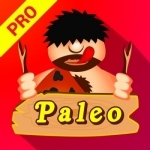
Healthy Paleo Recipes Pro
Food & Drink and Lifestyle
App
Are you on a paleo diet and looking for the best and most delicious paleo recipes? YOU'VE FOUND IT!!...
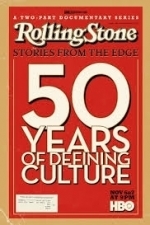
Rolling Stone: Stories from the Edge
TV Show Watch
Directed by Oscar-winner Alex Gibney (HBO’s Taxi to the Dark Side and Going Clear: Scientology and...

combyne - your perfect Outfit
Lifestyle, Social Networking and Catalogs
App
Find your perfect outfit in no time. Discover the latest fashion trends and your new favourite items...
